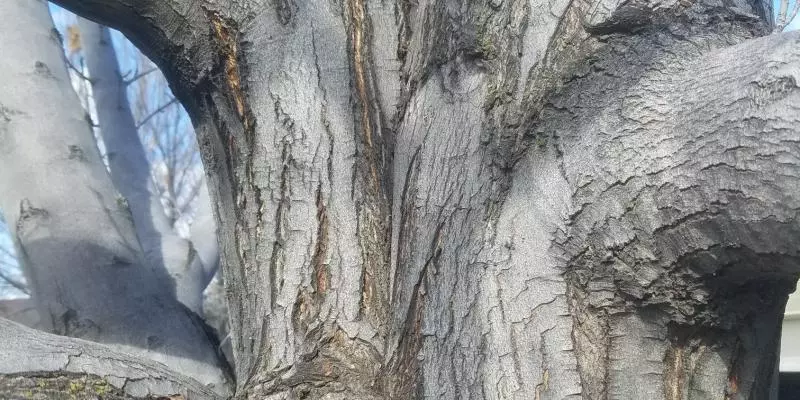Codominant Stems: Imposed Risks & Recommended Treatments

Codominant stems (or “leaders”) are two branches with the same diameter that have grown from the same point of origin (or “terminal bud”). Codominance can occur in any tree, but some trees are more likely to develop codominant stems than others. Maples and Oaks are generally more susceptible to codominance than most other tree species.
Early Treatment
Codominant stems pose risks; therefore, they should be inspected and diagnosed as early in the tree’s life as possible. When the tree is young and small, it is relatively easy to correct codominance by trimming or removing the smaller of the two dominant branches. By removing or trimming one of the codominant branches, an Arborist can select the branch that will take over as the dominant leader.
Late Treatment
The treatment of codominant stems in the later stages of the tree’s life is more challenging and requires expert assessment to decide which codominant lead will be left and which one needs to be removed. The correct limb must be selected as the primary stem because choosing the wrong branch can result in branch failure or tear out.
Risks
Codominant stems in trees can pose several risks, including:
- Structural weakness: The area where two or more stems meet can be structurally weaker than a single stem, making the tree more prone to failure in high winds, storms, or other stressors. After the branch has broken or torn off from the trunk, the open wound is the perfect entryway for insects and disease.
- Bark inclusion: When codominant stems grow too closely together, they can form a tight “V” shape, leading to bark inclusion. This can trap water, debris, and disease-causing organisms, increasing the risk of decay and structural weakness.
- Uneven growth: When two or more stems are competing for dominance, they can grow unevenly, leading to an unbalanced tree that is more susceptible to damage from wind or other forces.
For a complete overview and risk assessment of your tree, it’s essential to hire a Tree Risk Assessment Qualified (TRAQ) Arborist – which you can find here at Timmy’s Tree Service.



